Table of Contents
This HOWTO contains procedures for creating a dedicated Rivendell "appliance" system using the Ubuntu Desktop 22.04 LTS Jammy Jellyfish distribution. While the screenshots are specific to Ubuntu Desktop, these instructions are also applicable to other distributions devices derived from it. Such distributions include:
Ubuntu Studio 22.04 LTS Jammy Jellyfish
Linux Mint 21
Installing Rivendell on Ubuntu Desktop consists of these primary steps:
Install the base distribution.
Bootstrap and run the installation script.
The following items are required to complete the installation.
Target hardware. 64 bit (x86_64) AMD or Intel architecture is supported. For the purposes of this HOWTO, the target machine will be assumed to have a single, blank hard drive. Installations utilizing multiple hard drives (including RAID arrays) are possible, but beyond the scope of this HOWTO.
Note
Secure Boot should be disabled on the target hardware prior to beginning installation. Failure to do so may result in third-party drivers for certain hardware --e.g. AudioScience audio adapters-- failing to initialize properly.A installer image for Ubuntu Desktop 22.04 LTS Jammy Jellyfish, available at https://ubuntu.com/download/desktop. After downloading the ISO image, burn it to a blank DVD or make a "bootable" USB key using the instructions on the download web site.
A working Internet connection.
If you are planning to install in client mode, the IP address of the Rivendell server to which this instance will connect.
Boot the Ubuntu Desktop 22.04 LTS Jammy Jellyfish installation media (DVD or USB key). You should wind up at the initial boot screen.
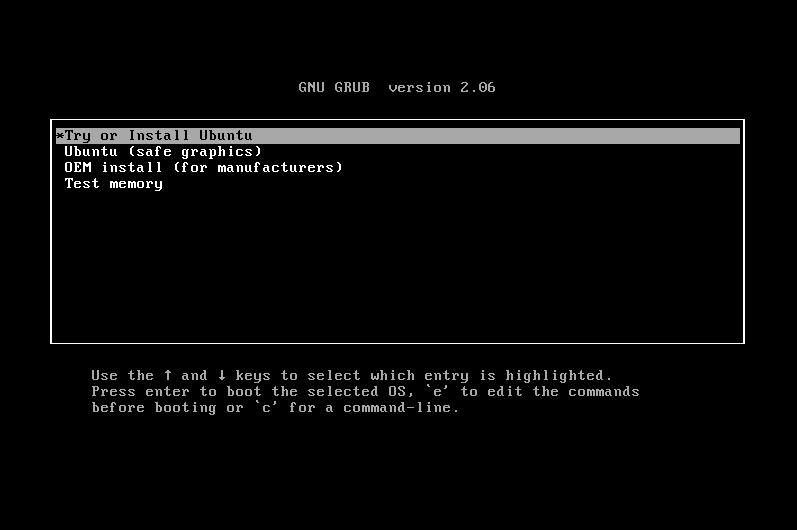
Note
Depending on your specific hardware and BIOS settings, the appearance of the initial boot screen may vary from the example shown.
Highlight the Try or Install Ubuntu
prompt and then press Enter to proceed to the
Welcome screen.

You will be asked to specify the language to use for the install.
Choose and then touch the Install Ubuntu
button to proceed to the
Keyboard Layout screen.
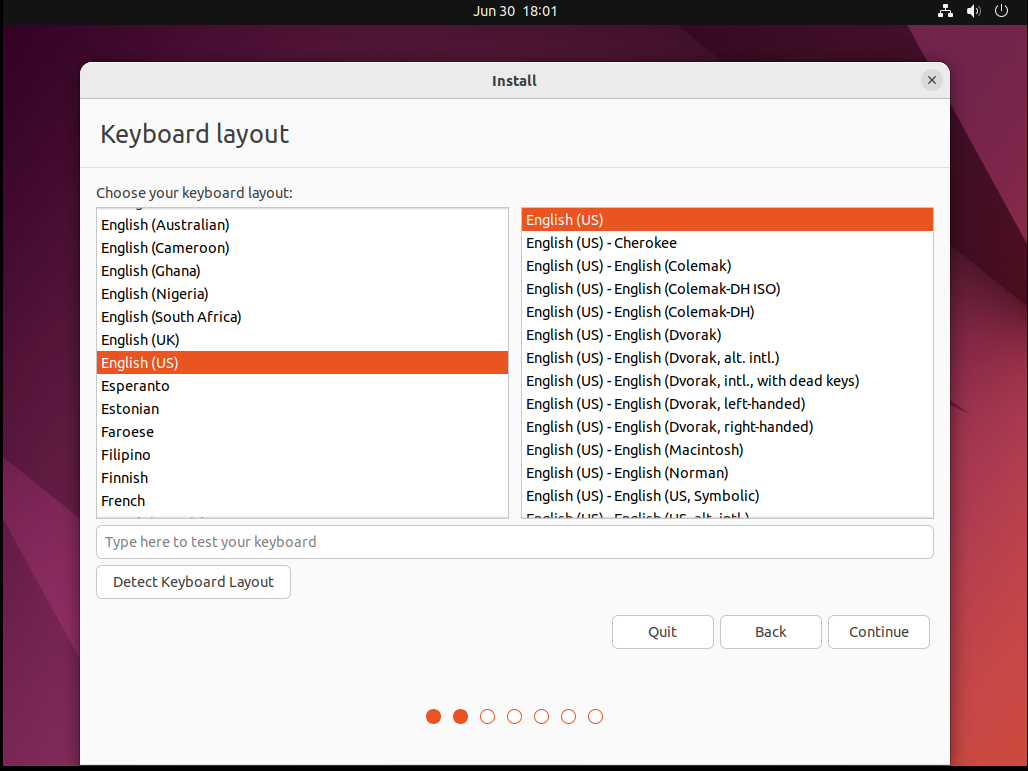
Choose your desired keyboard layout and then touch the
Continue button to proceed to the
Updates and other software screen.
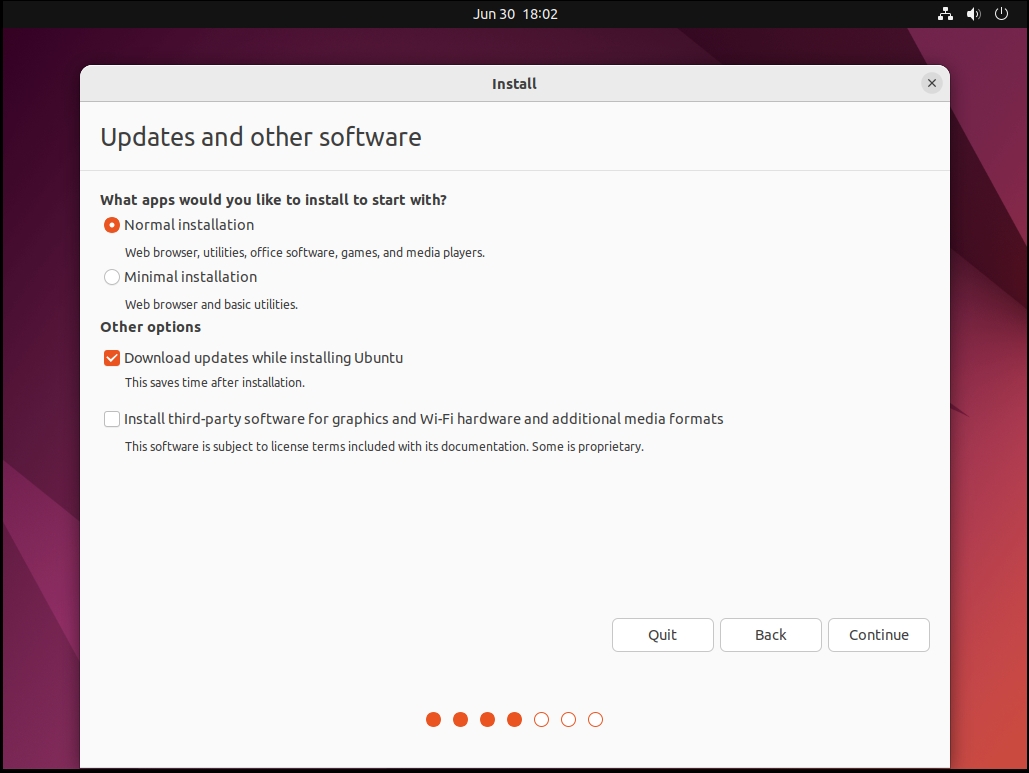
Touch the Continue button to proceed
to the Installation type screen.
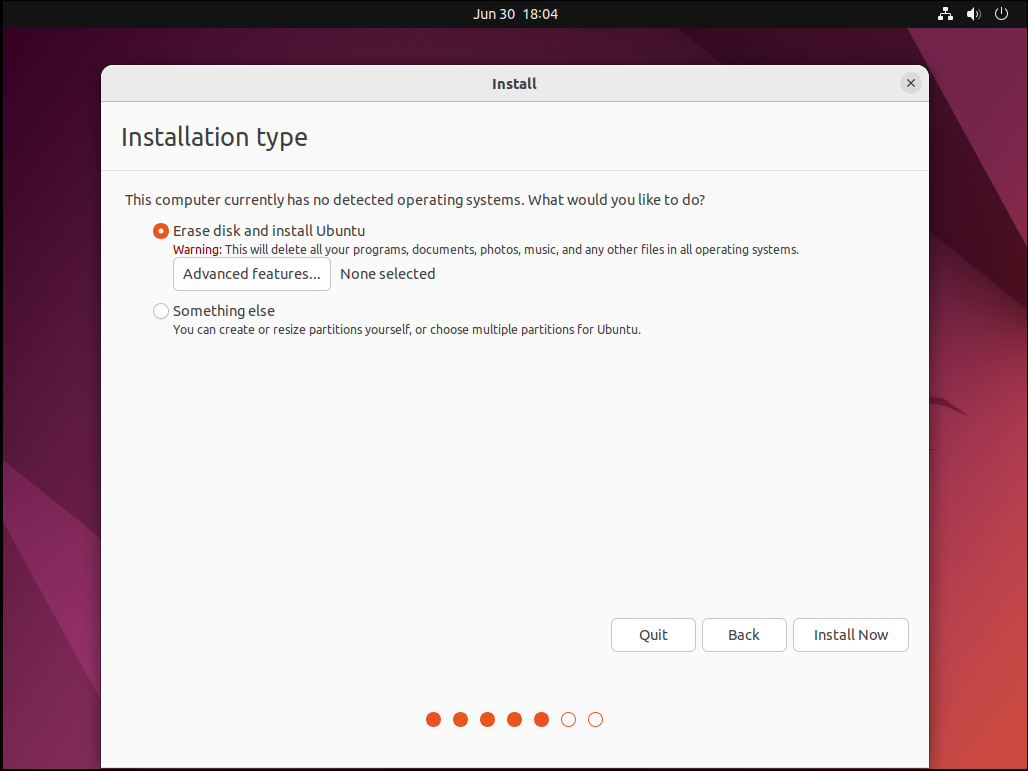
Select the
Erase disk and install Ubuntu
option and then touch the Install Now
button. You will then be prompted for the timezone to be used on the
system.
Note
You may be prompted to confirm the changes about to be made to the systems discs at this point.
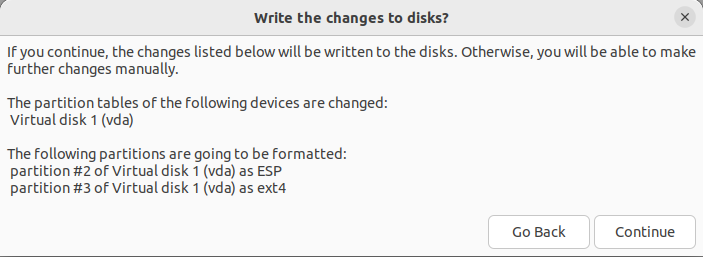
If this happens, touch the
Continue
button to proceed.
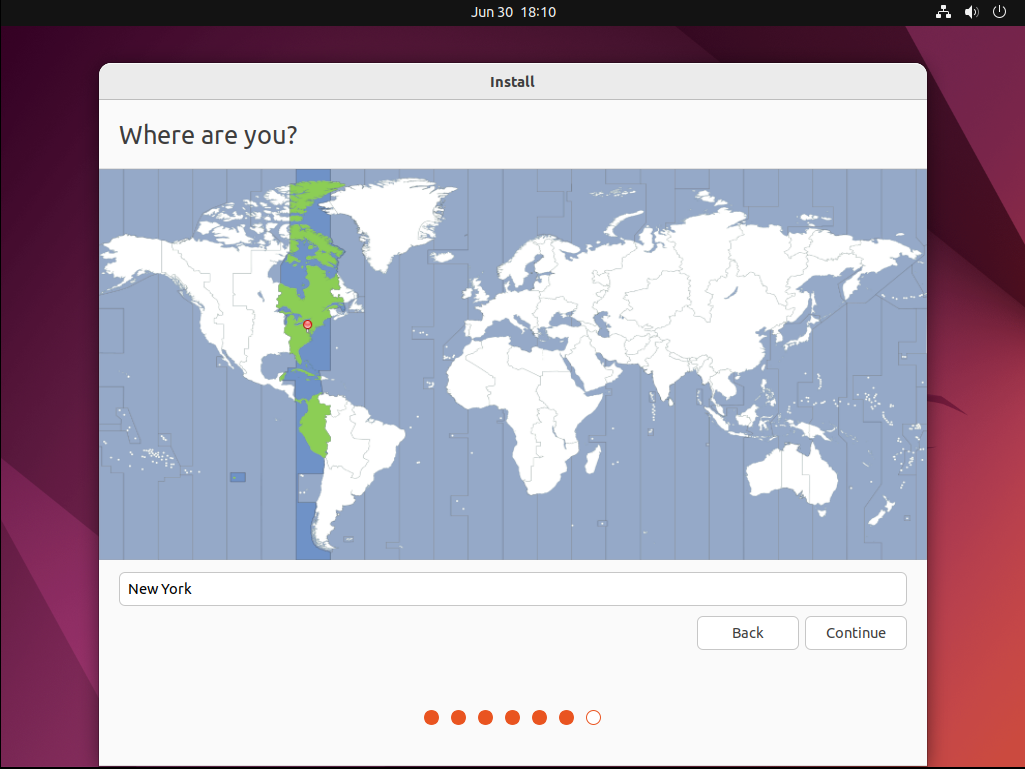
Choose the desired region for the time zone and then touch the
Continue button to proceed to the
Who are you? screen.
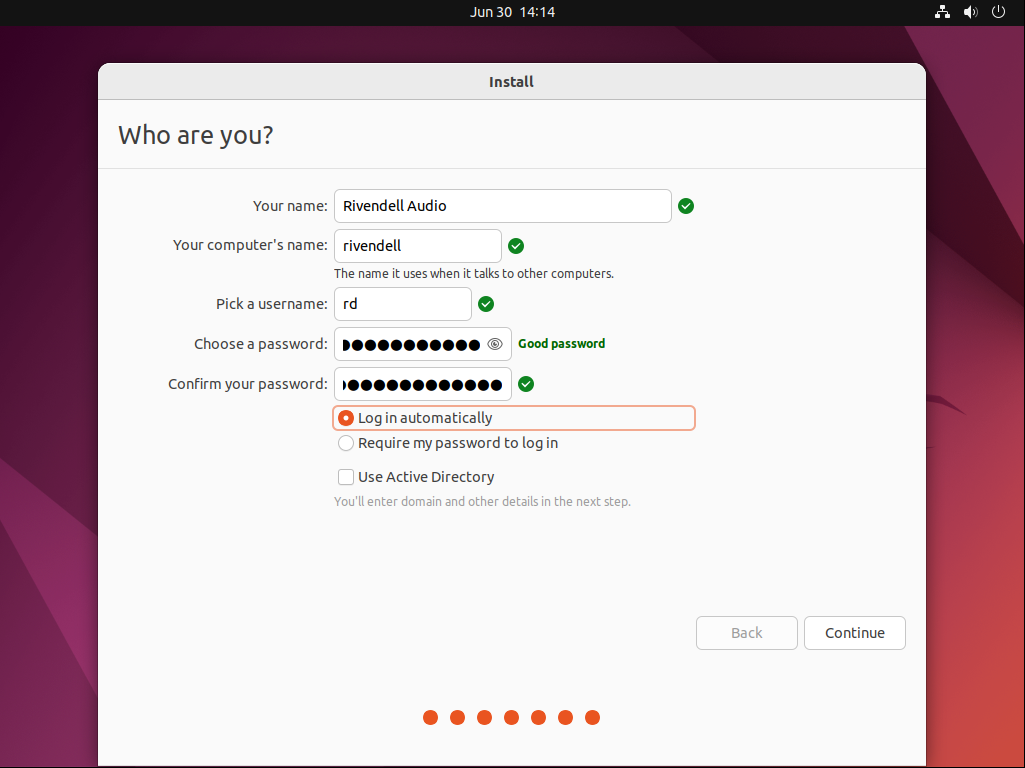
The following fields should be filled out as follows:
-
Your name: Rivendell Audio-
Pick a username: rd
The remaining fields should be filled out as appropriate for your site.
When everything is filled out as you wish, touch the
Continue button to begin the actual
installation. Depending on the speed of your Internet connction, this
will take anywhere from a few minutes to an hour or more.

You will eventually see a message that the installation is complete.
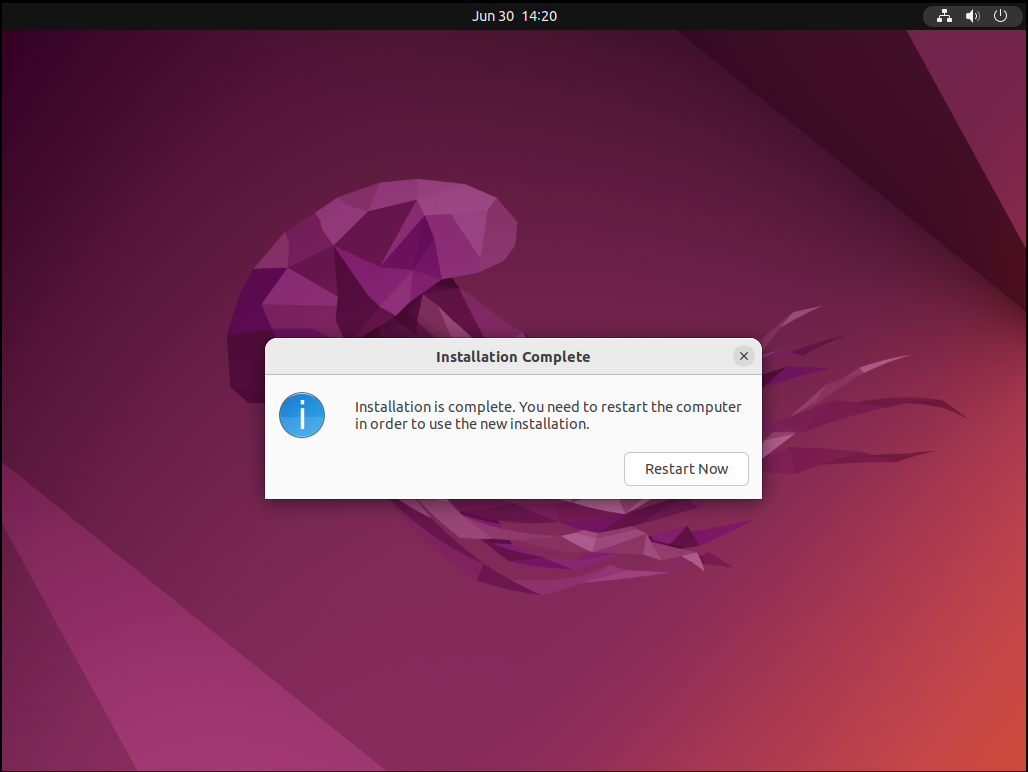
Touch the Restart Now button to
reboot the system.
The system will reboot and come up to the login screen. Login in as user "rd", using the password that you set earlier.
Note
If you ticked theLog in automatically
checkbox when creating the user earlier, the login prompt will be
skipped.
After logging in, you will see the
Online Accounts dialog.
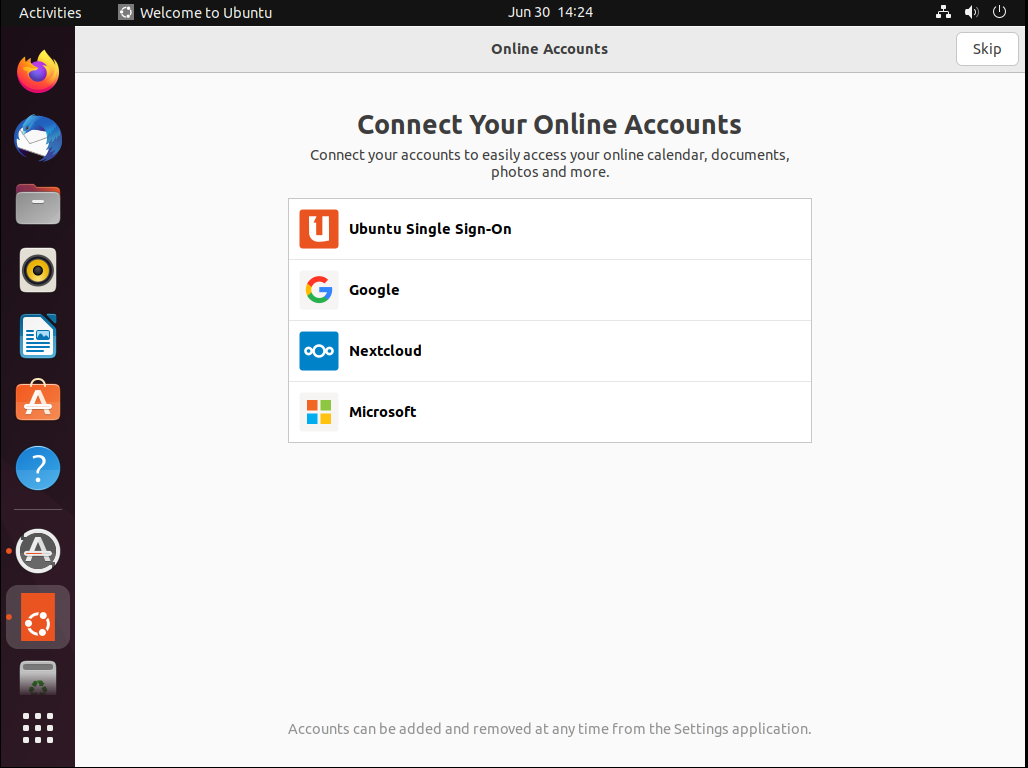
Touch the Skip button to proceed to
Help improve Ubuntu screen.
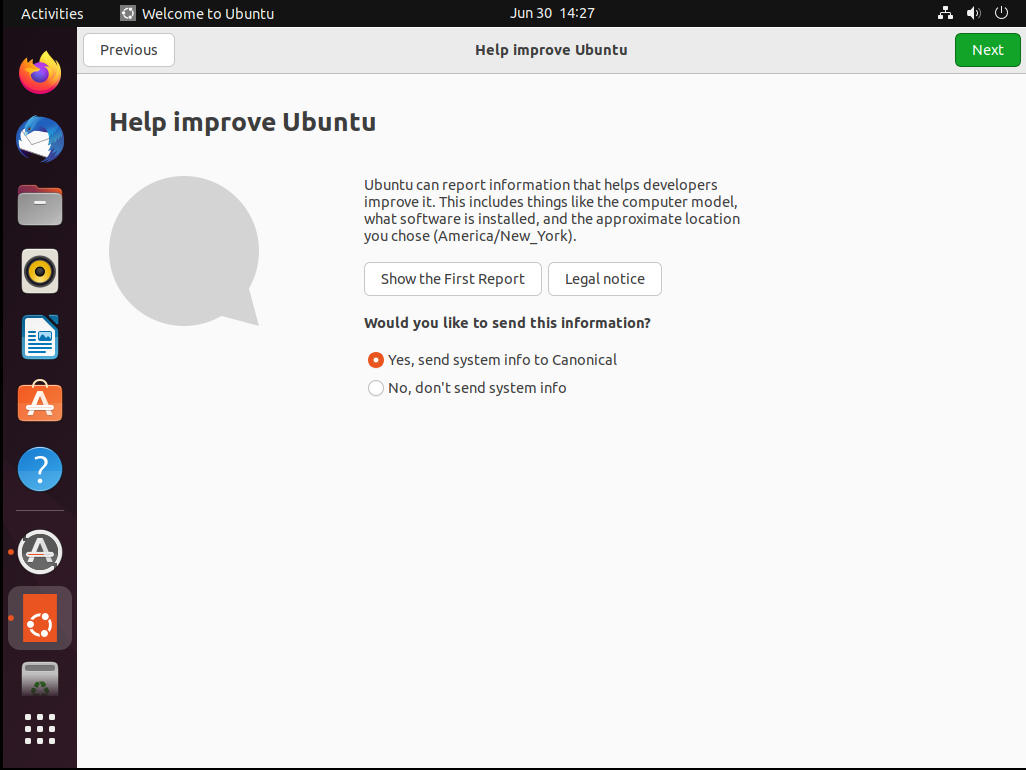
Make selections as desired and then touch the
Next to proceed to the
Privacy screen.

Make selections as desired and then touch the
Next to proceed to the
Ready to go screen.
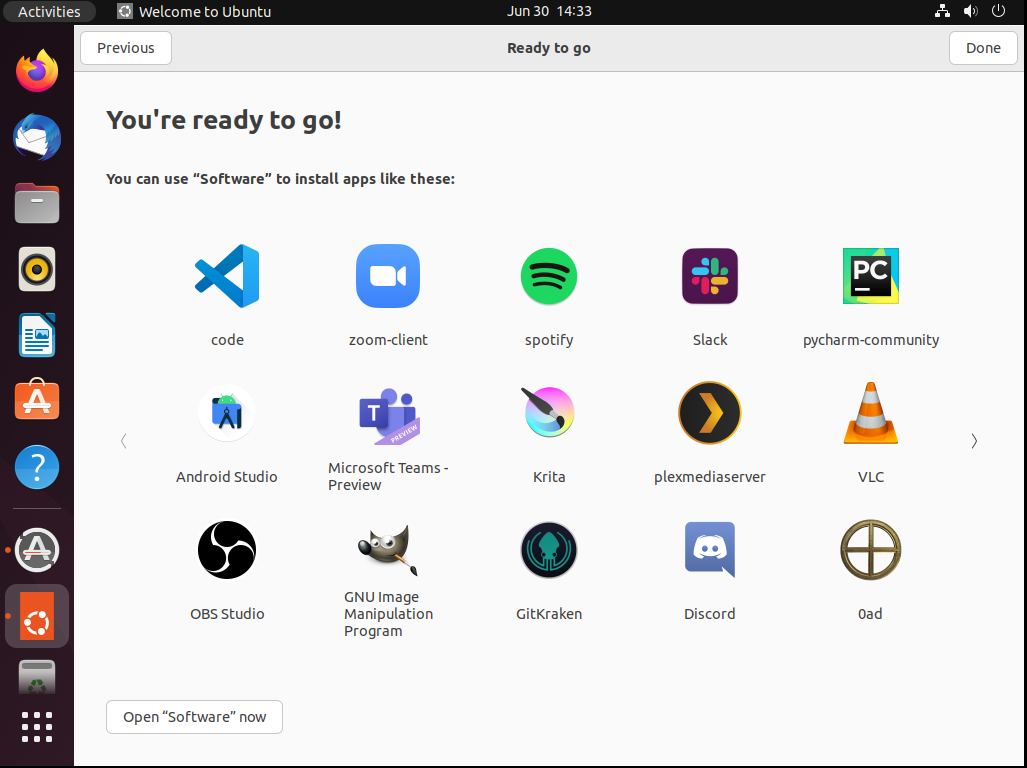
Touch the Done button to exit the
Welcome to Ubuntu utility.
You may be prompted to install updated software packages (evidenced
by the appearance of an item with the phrase
"Software Updater" on the top taskbar of the desktop).
If this happens, touch the item to open the updater dialog and then the
Install Now button to install the
updates.
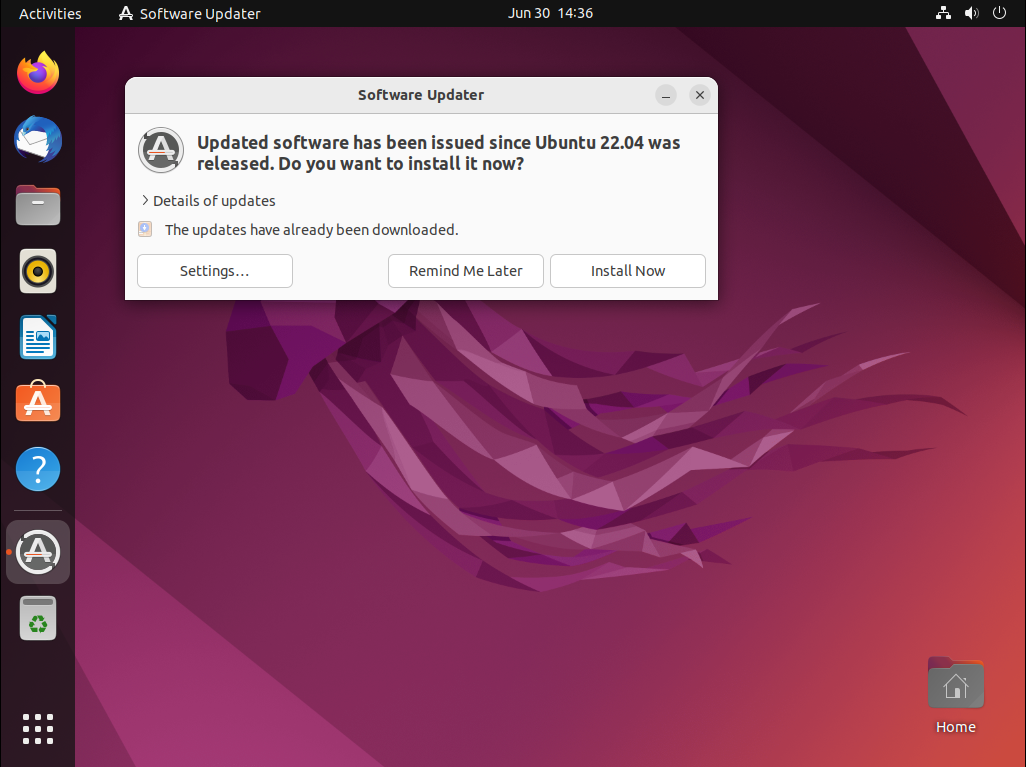
Following which you should see this message.
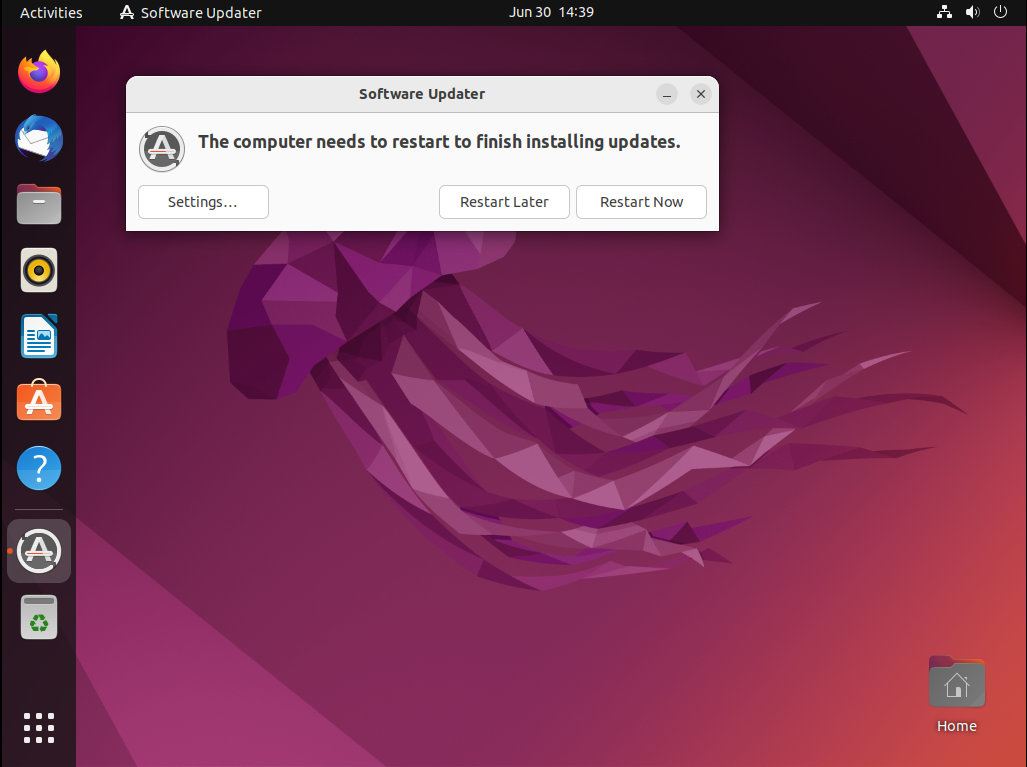
Touch the Restart Now button to reboot
the system, following which the system will be ready to have Rivendell
installed.
Do a right-click with the mouse on the desktop to pop-up a menu
and choose the Open in Terminal item.
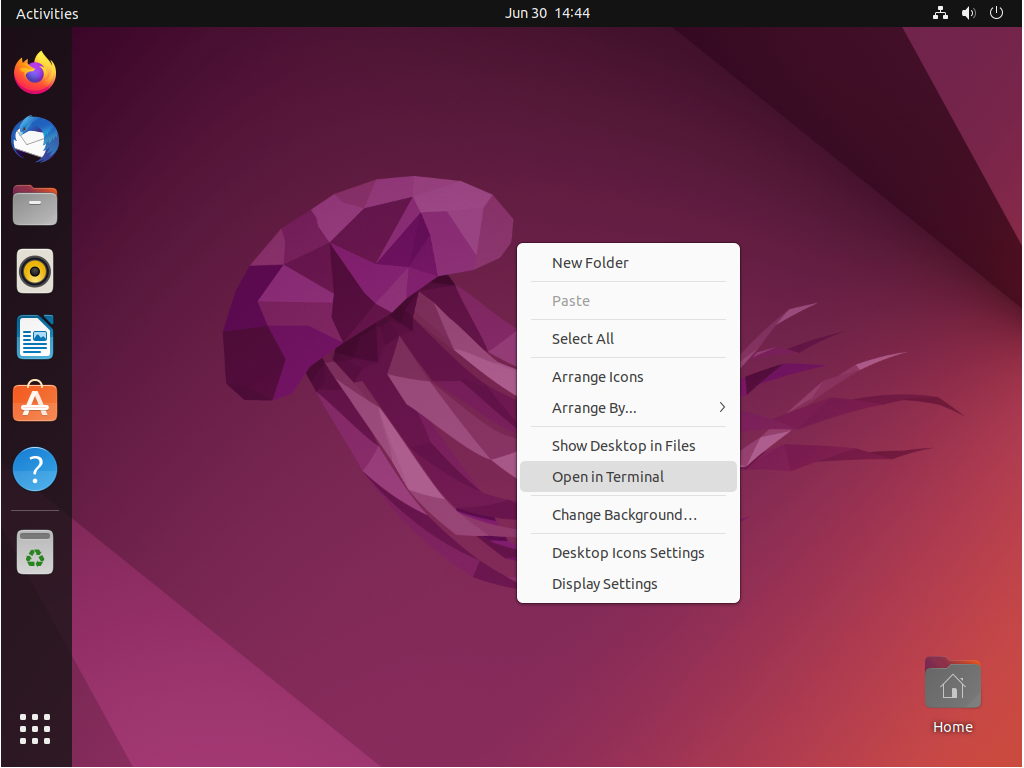
A Terminal window will appear.
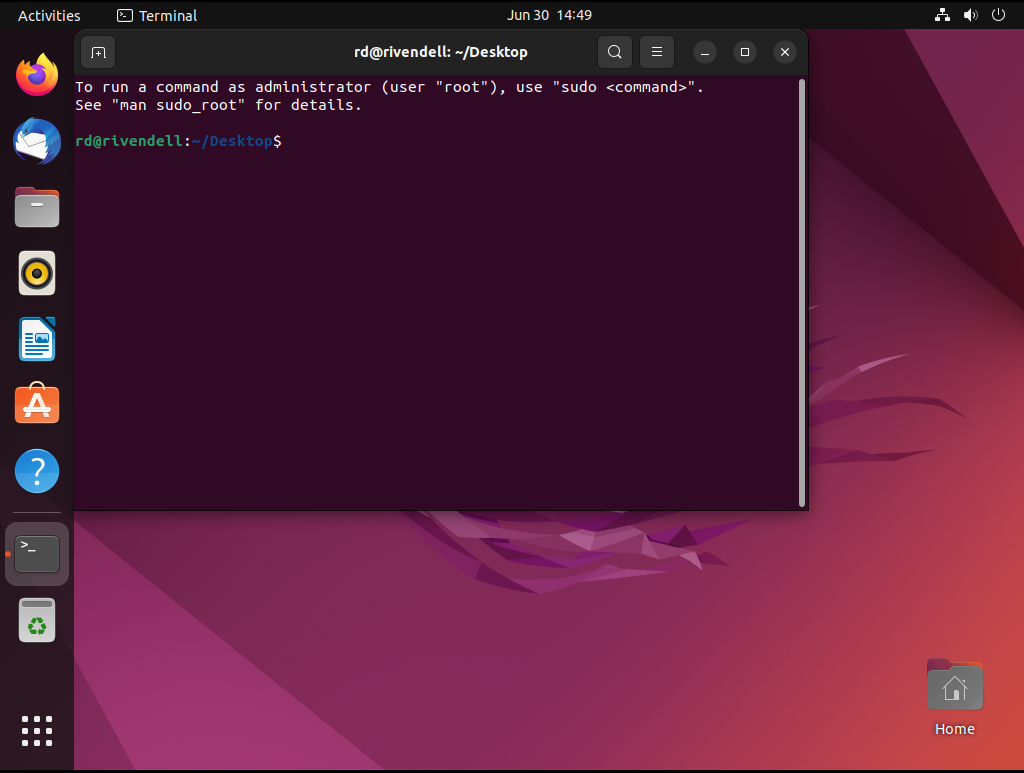
Enter the following statements in the Terminal window exactly as shown,
pressing the Enter key after each one:
wget https://software.paravelsystems.com/ubuntu/dists/jammy/main/install_rivendell.sh -P .
chmod 755 install_rivendell.sh
sudo ./install_rivendell.sh
You will be prompted for the password for user
rd. Enter the password that you set
during the installation process.
Note
The password will not be visible on the screen as you enter it. This is normal.
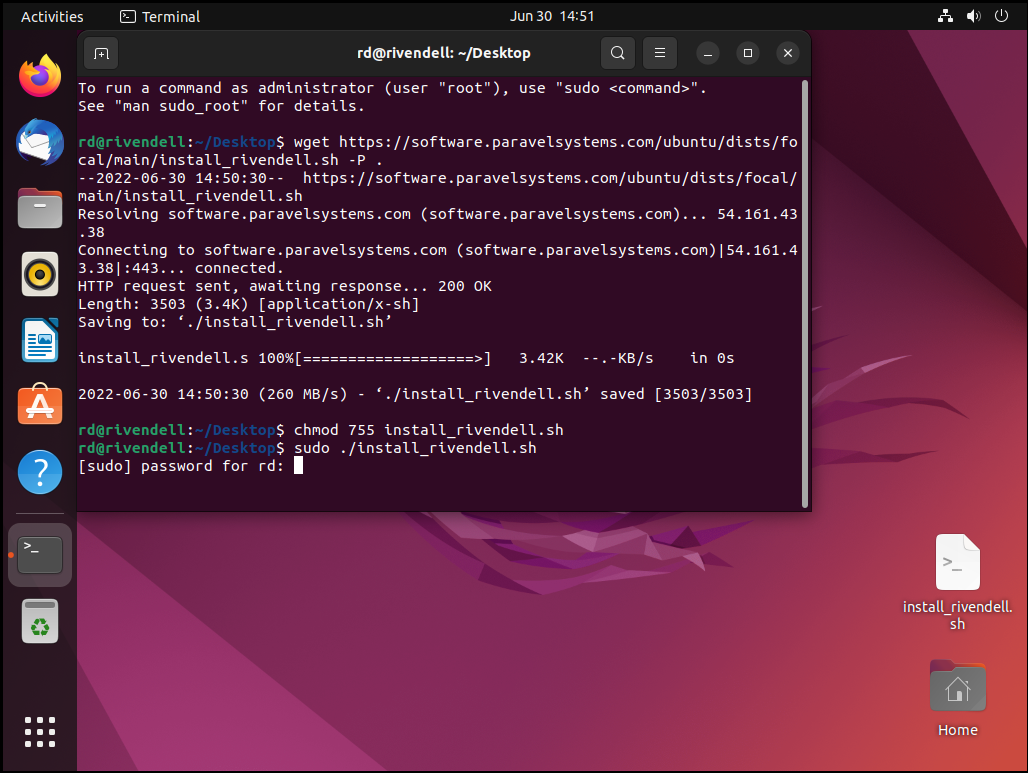
The installer will now start up and display its main menu.
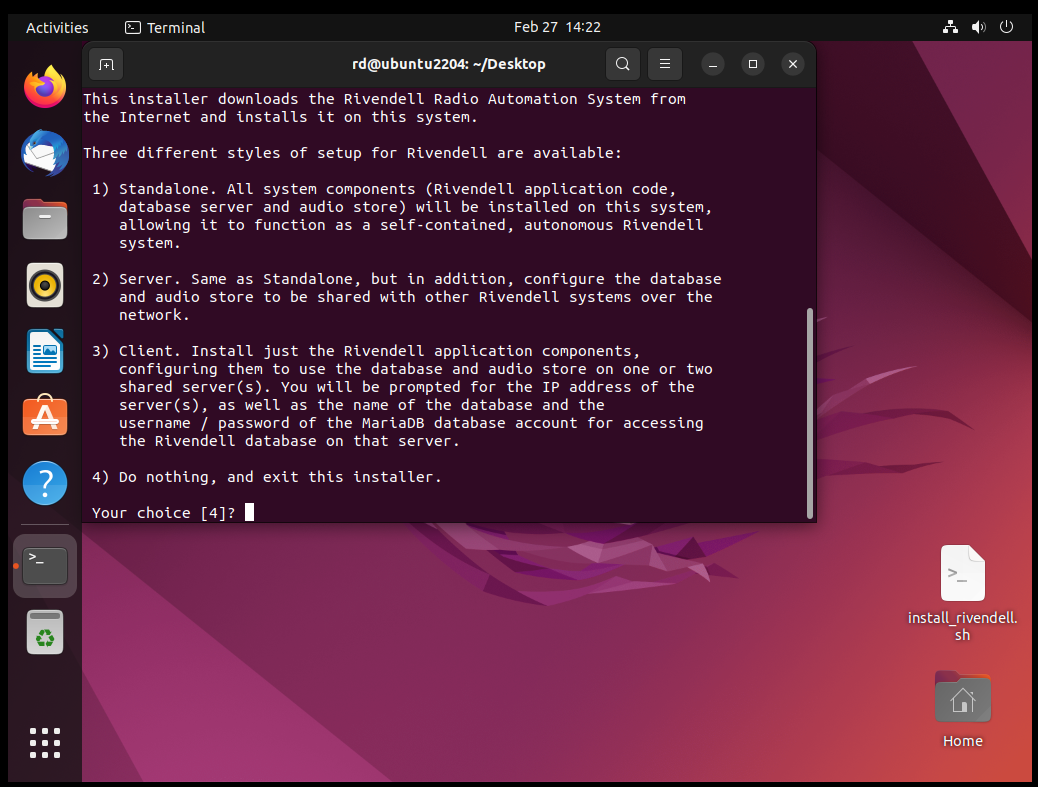
The installer supports three different "installation modes" for Rivendell, as follows:
- Standalone
Install system components (Rivendell application code, MySQL database server and audio file store) on this machine, allowing it to operate as a completely self-contained and autonomous Rivendell system.
- Server
The same as "Standalone", but will also configure the MySQL database and audio file store components to be shared with additional "client mode" Rivendell systems.
- Client
Install just the Rivendell application components, configuring it to use the database and audio store on one or two shared server(s). You will be prompted for the IP address of the server(s), as well as the name of the database and the username / password of a MariaDB database account for accessing the Rivendell database on that server.
Note
When prompted to enter the IP address of the NFS server that holds the Rivendell audio store, simply hit theEnterkey if it is on the same server as the MariaDB database (almost always the case).
Enter the number for the type of installation desired, then press the
Enter key.
Depending upon the speed of the Internet connection, installation will typically take around fifteen minutes. When installation is complete, reboot the system with the command:
sudo reboot
After rebooting, the system is ready for service.